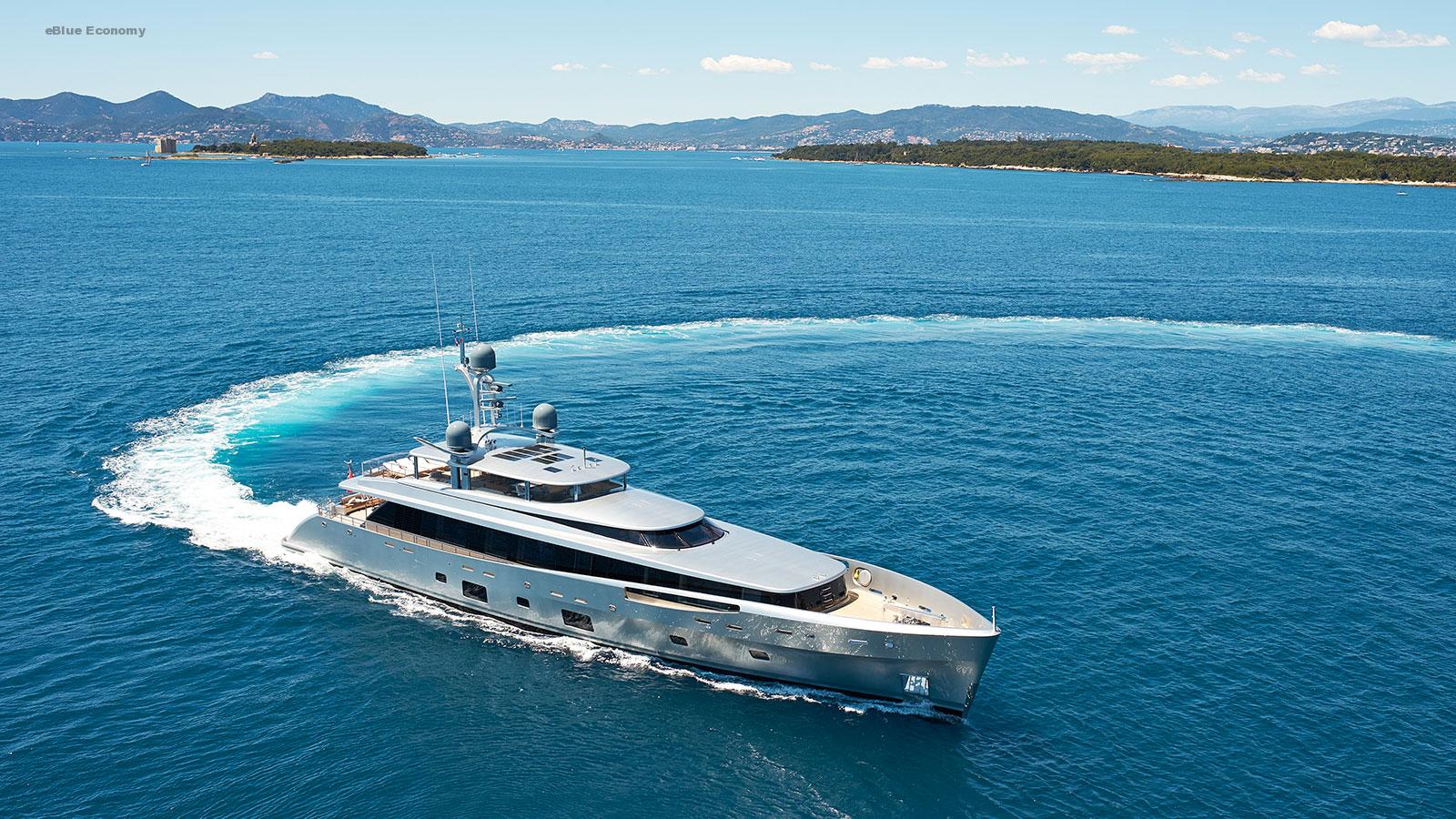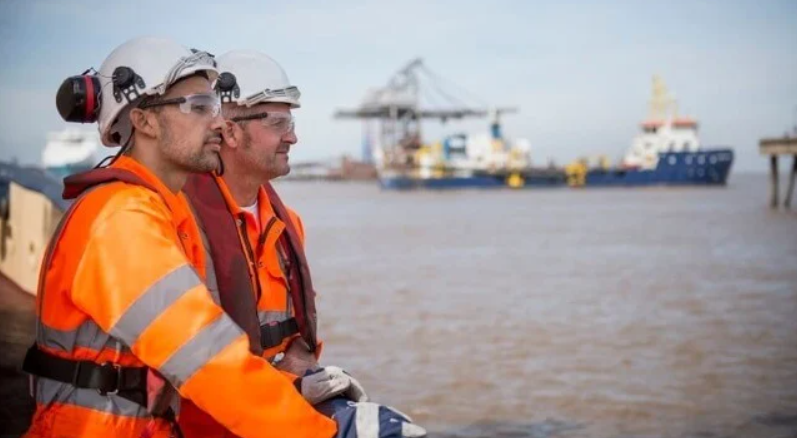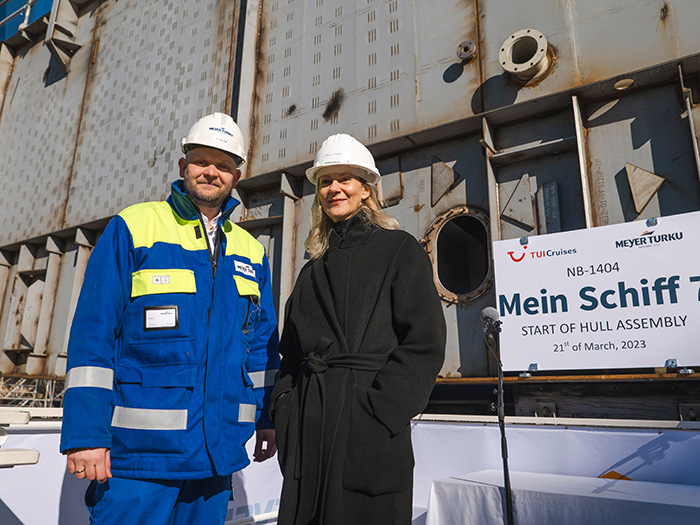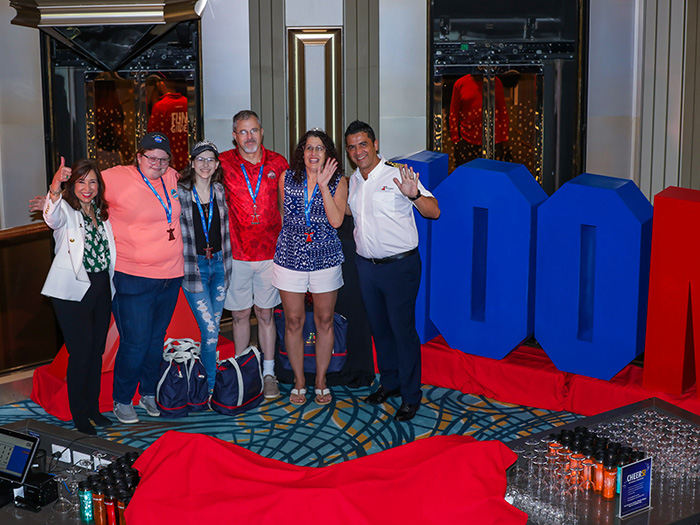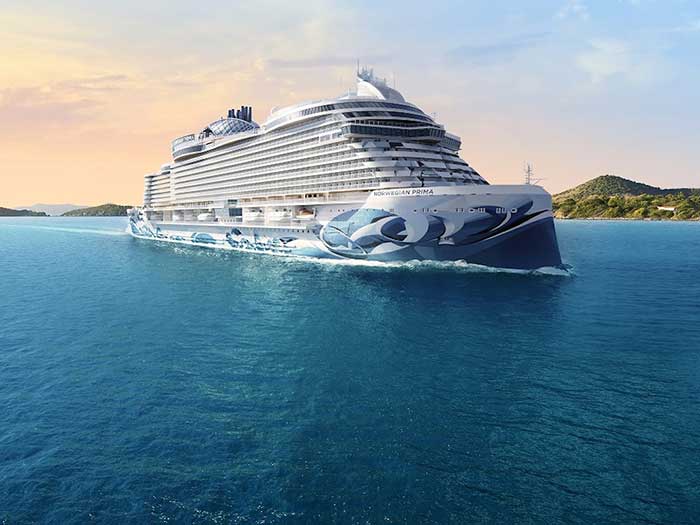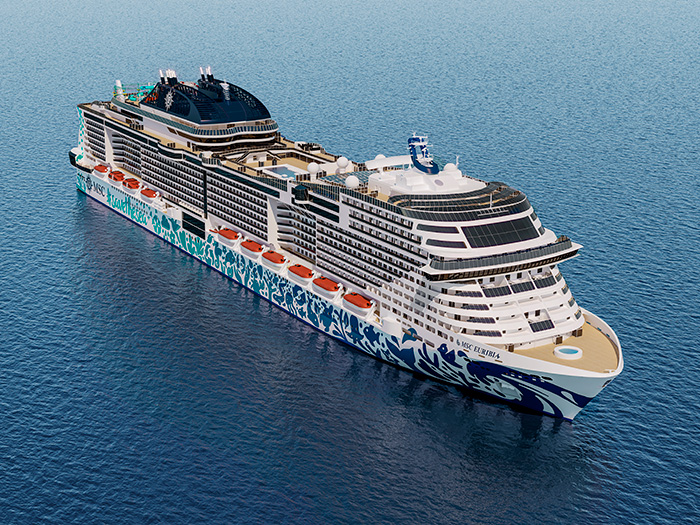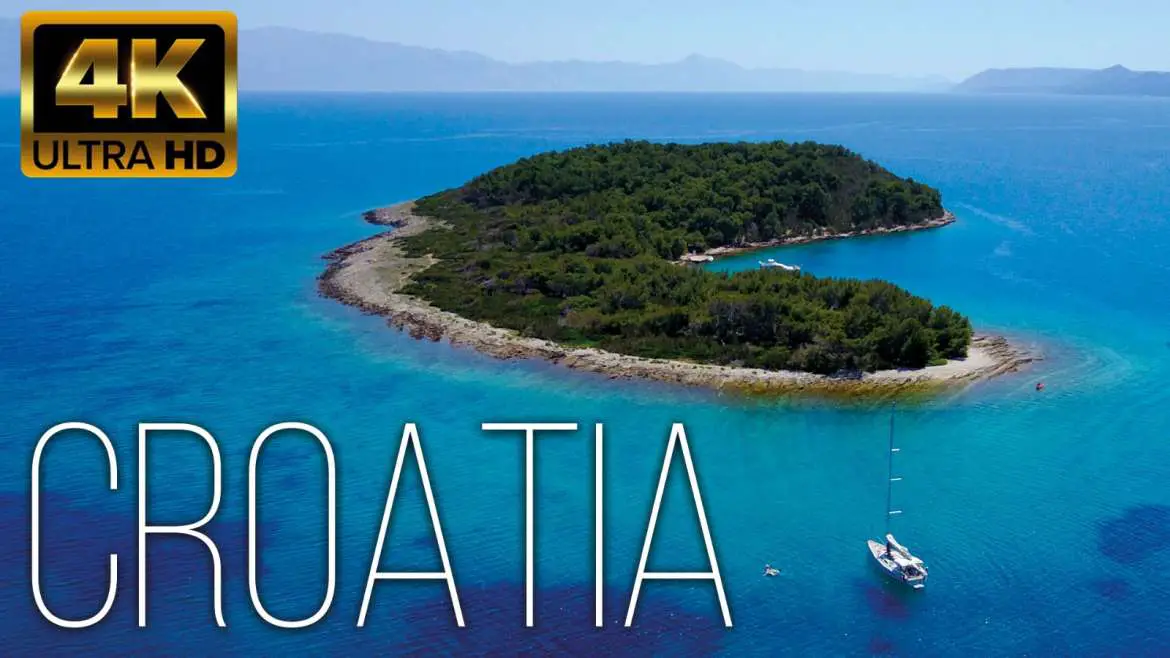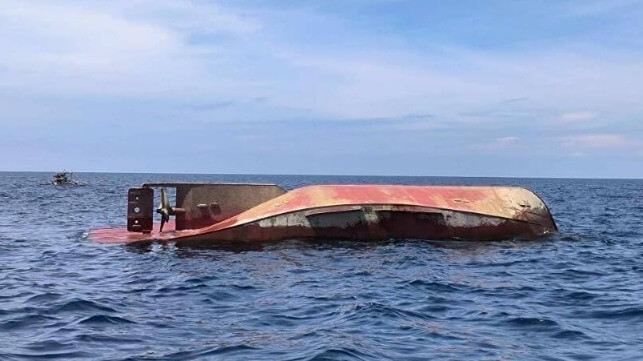This superyacht was named Como when launched but she’s since been sold and renamed Lady May. Boat International was invited on board for a first look at Como in 2014, when she was owned by Neville Chricton
Built for experienced yacht owner Neville Crichton, the 46 metre Feadship motor yacht Como won her designers and naval architects three awards at the ShowBoats Design Awards 2015.
This included Dubois Naval Architects winning both the exterior design and naval architecture honours, and her interior designer Redman Whiteley Dixon taking top spot for the interior design award for motor yachts below 500GT.
I first encountered Neville Crichton more than 20 years ago while researching an article about a boat built for him in his home country, New Zealand.
I wrote then: ‘Crichton has a habit of thinking about ways to improve things. Race cars, business ventures, sailboats – it makes no difference. He restlessly turns things over in his mind looking for ways to optimise everything in his life.’
Some things never change. As I tour Neville Crichton’s new motor yacht, Como, a 46 metre Feadship, project manager Ludo van der Lelie points out functional details, storage spaces and crew area features resulting from Neville Crichton’s trips to the yard during construction. It is classic Crichton-isation.

eBlue_economy_Lady_Mary
Superyacht Como designed by Dubois Naval Architects
Neville Crichton also relied on the talents of the same design team, Dubois Naval Architects, which has designed eight yachts for this owner, and the interior design firm Redman Whiteley Dixon (RWD).
Como: an unexpected yacht for Feadship
As logical as Como is in the evolution of Neville Crichton’s taste and yachting experience, she is an unexpected yacht for Feadship. It’s been 16 years since either the Van Lent or De Vries yard built a raised pilothouse motor yacht, and few are the all-aluminium motor yachts with a Feadship badge.

eBlue_economy-r yacht_ COM
Yet there is no denying the quality and diversity of Feadship’s aluminium yachts, Sussurro, Venus and Gallant Lady among them. Aluminium is the perfect material for semi-displacement yacht designs where speed and/or efficiency and shallow draught are more important than volume.
By its very nature, the raised pilothouse shines in terms of visibility, access to the working deck, crew circulation and crew quarters, and stability for those on watch.
Access to the bridge is easy and unintimidating for owner and guests. Perhaps the most significant element of a raised pilothouse motor yacht is that its low profile obviates the necessity for foldout terraces or transforming transoms to allow passengers to have a relationship with the ocean.
Dubois has designed multiple yachts for Neville Crichton, including the latest Como
Dubois has been working with this style since 2003, and Alloy Yachts has built five to his designs, including one for Neville Crichton, the 2007 41.4 metre Como.
But with this new boat, Dubois has drawn a race car enthusiast’s motor yacht: a 19-knot head-turner that looks like she’s always ready to run. Her silver metallic paint dazzles, and the glass that goes on forever is as perfectly undistorted as the windscreen of any of the cars Neville Crichton used to race, except much of this glass goes up and down at the touch of a button.
Re-designing the new Como
Neville Crichton also loves projects. According to Malcolm McKeon, formerly with Dubois Naval Architects, Crichton began talking about a new motor yacht when the last one was barely a year-and-a-half old.
‘When I began thinking about a new boat,’ Neville Crichton says, ‘my idea was just a larger version of [the 41.4 metre] Como, but it was the height of the global financial crisis and even though Australia came through that pretty well, I just wasn’t excited,’ Neville Crichton says.
The new drawing lay untouched. ‘Then [about 12 months later] Ed and Malcolm went back to the drawing board and came up with something that really worked for my lifestyle.’
‘Instead of stretching the current Como, we went back to scratch, back to first principles,’ says Dubois. ‘Create a seaworthy hull that can be easily driven to 19 knots with conventional power.’
The main saloon of superyacht Como, award-winning interiors by Redman Whiteley Dixon
By 2011, Dubois Naval Architects had come up with the package for a two-and-a-half deck, 46 metre boat, that had a more upright bow, and a lobster boat or whale back sheer-line, to supply a higher bow forward but low bulwarks next to the main saloon. Neville Crichton became enthused.
The Dubois office proceeded with the engineering and tank tested the hull model for speed potential and spray at the bow. The bow has a rake of 16 per cent compared to the 40 degrees of other motor yachts off the Dubois boards. ‘We were worried about not having much bow overhang, so we created a massive knuckle to turn away the spray and widen the working area forward,’ explains Dubois.
‘At about the same time, [Feadship director] Henk de Vries approached me about building a new boat. I had the design package and frankly it appealed to my long-time desire to own a Feadship,’ Neville Crichton says.
‘At the beginning they were cautious, because it was the first time De Vries was working without drawings from De Voogt, and they had to build a relationship with my team. As the process progressed, this relationship developed very well, in particular through Malcolm working as a conduit for the communications.’
The brief for Como included space for outdoor entertaining
The superyacht designed for entertaining
Both Dubois and Justin Redman from RWD concur that apart from performance, the main driver of any design for Neville Crichton is its ability to support entertaining.
‘Neville is the consummate gracious host. That’s one of the reasons the flybridge works for him because you can have a lot of people together in an open environment,’ says Dubois. ‘Only this time a bit more grand,’ adds McKeon. ‘On the last Como, the weather enclosure for the flybridge was plastic.
This time, he wanted glass but we had to be able to remove it if he wanted the breeze.’
As a result, says Van der Lelie, the glass surround protecting the front of the flybridge is in three large distortion-free sections, each curved and mounted on a lift mechanism, and flat side panels to semi-enclose the space at the touch of a button.
The flybridge hardtop contains fan coil units to distribute heated or cooled air so that it functions like an all-season outdoor living room with a large bar, dining space and large pieces of moveable furniture.
‘The boat is very liveable. The design means that we have enjoyed the effect of being outside but inside at the same time,’ says Neville Crichton. Como’s coming out party was none other than trackside as one of the yachts at the Monaco Grand Prix. ‘We had an absolute ball. We could look at part of the track [while enjoying] all the comforts of the boat.
The combination of the position and the fact that we could see the jumbo screen, as well as the TV screens on the boat meant, from a spectating point of view, it was like being in a prime grandstand. At the same time, I could entertain 50 people on the flybridge comfortably.
The boat is the centre of attention and allows me to entertain many friends. It is, without doubt, the best way to attend the Monaco Grand Prix.’
Superyacht Como benefits from Feadship’s glass technology research
Responding to the brief that the boat must be a step up, Redman emphasised a key feature. ‘Often on these boats, the stairs are small and simple.
We wanted to give the stairs more importance as you aren’t just going up to the deck, you are going to what, in essence, is another room, and the stairs down lead to really nice guest suites.
We thought that since the themes of this boat are light and line height, the staircase should participate in that with openness and reflective surfaces.
The light just bounces around from the white Thassos marble treads onto the polished stainless steel, and it’s brilliant. The stairs look twice as large and impressive as they are, adding to the illusion of even more height.’
Indeed, from the aft end of the saloon, they create a trompe l’oeil effect. The mirror-polished stainless steel runs up the stair surround and flows out across the saloon overhead as well to pull a visitor’s eye upward.
Dubois and RWD’s experience with sailing yachts had the yard wringing every bit of use out of the space between decks, rerouting plumbing stacks, HVAC and conduits to create maximum ceiling height and nearly full-height saloon windows.
Como benefits from Feadship’s glass technology research
Everywhere in the boat the potential for outside views is maximised, and this reaches its apex in the owner’s suite, where dark glass wraps the superstructure port and starboard and sweeps around the front, creating a room with substantial views.
Of course, given the high bow and bulwarks mandated for dryness and seakeeping, the effect would have been lost except to those standing.
‘Our first thought was to cut a hole in the bulwarks so you could see out if you were sitting or lying in bed – and then we realised: “Right, how do we keep the water out?”’ says McKeon.
The owner’s stateroom has excellent views thanks to holes cut in the bulwarks
The answer was a six metre-long window in the bulwarks on either side. The designers wanted the look of an unbroken panel of glass flush with the metal.
Not only did MCA and Lloyd’s impose tough restrictions on wave-impact resistance of those exterior windows, they insisted on significantly more aluminium stiffening the flange that surrounds the opening.
Although Feadship has put extensive R&D into glass as a structural material beginning with its own X-Stream concept in 2006, the approvals process for tempered and chemically hardened and bonded glass is a shattering experience – literally.
‘The classification society requires extensive engineering studies on the glass panels, and even when they approve the plans, during construction all the panels have to be tested,’ says Van der Lelie.
The Lloyd’s process requires that full-size samples of the pieces to be installed be presented for testing not just one, but multiple copies. In this case, the test was a 13-pound (5.9 kilo) weight dropped three times from a height of 26 feet (7.9 metres).
Typically, if the sample passes the design specification, they will continue increasing the impact until the piece fails. ‘We did three tests of each of the wheelhouse panels and when those were successful, we only had to test the side pieces twice.
It was a good thing the glass passed because we had already faired the sides of the hull to the thickness a 3D scan showed us was required for this glass to set flush with the metal when painted. the glass had to been remade or the aluminium surround reconfigured, we would not have delivered on time.’
Belowdecks, the four guest suites each have one oversized, fixed, hull portlight lined up with the guest beds placed athwartships, which the surveyors told Feadship won’t be approved in the future. ‘That’s a shame because they make really great views.
You can’t get around it by installing storm shutters for offshore passages because the storm shutters would just be too big and heavy for the crew to handle,’ says Van der Lelie.
The interior styling of Como
Blurring the indoors and outdoors also extends to the saloon. ‘In most boats the saloon just doesn’t get used,’ says Redman. ‘The owner rarely uses the interior dining area so the exercise was to make the saloon space multifunctional, opening it up to the aft deck or making it cosy for watching a movie.
The key element is the bar, which spills over from the saloon to the aft deck. When entertaining, the aft glass doors and the window that bisects the bar disappear, making one large social space, connected by adjacent stairs to the upper deck, which now has equal stature.’
Como’s interior boasts flexible circular seating
The snug spot is the circular sofa in the centre of the saloon. Often, when you enter a saloon from the stern you see the back of a piece of furniture. On Como, the entire seating area, including the coffee table and carpet, can rotate 360 degrees on a cushion of compressed air to face the aft deck, the bar, the 82-inch TV, the dining table or anywhere else.
Como’s décor is overtly masculine and monochromatic. The scrubbed oak joinery that forms a backdrop for the owner and guest spaces contrasts with natural fabrics, glossy Macassar cabinets and details and stainless steel trim.
RWD sourced the black-and-white photos that, along with a large piece of carved New Zealand jade, serve as the sole artwork aboard the yacht.
Como: the most sophisticated 46 metre superyacht in the world today?
Neville Crichton pushed for optimum performance from a pair of Caterpillar C32s, the largest engines he would allow. After controlling interior weight as much as possible yet still installing the largest tender the stern garage could accommodate, meeting the contract speed solution came down to the performance of two small metal bars on the bottom of the hull just forward of the transom.
‘They function like interceptors, but they aren’t adjustable,’ says McKeon. ‘They are drilled and tapped into place and deflect just enough water when the yacht is going 10 knots or better to keep the stern from squatting and creating drag.’ Running at its 16-knot cruising speed, Como burns 380 litres per hour.
‘We are delighted to make our mark once again in this size range,’ comments de Vries. ‘Feadship is not only about very large superyachts: we also pride ourselves on creating exceptionally well-honed objects on a more human scale.
We have used the very latest technologies and developments to push the window – and the windows – on what is surely the most sophisticated 46 metre superyacht in the world today.’
Como is designed to reach top speeds of 19 knots
Superyacht Como specifications
LOA: 46.2m
Beam: 9m
Draught: 2.25m
Displacement: 352 tonnes
Gross tonnage: 406GT
Power: 2 X Caterpillar C32 ACERT
Speed (max/cruise) 19/16.5 knots
Range: 2,000nm @ 16.5 knots
Construction: Aluminium
Naval architecture and exterior design: Dubois Naval Architects
Interior design: Redman Whiteley Dixon
Owner’s project manager: Steve Jacover Yacht Project Management
Builder/year: Feadship/2014
press release


